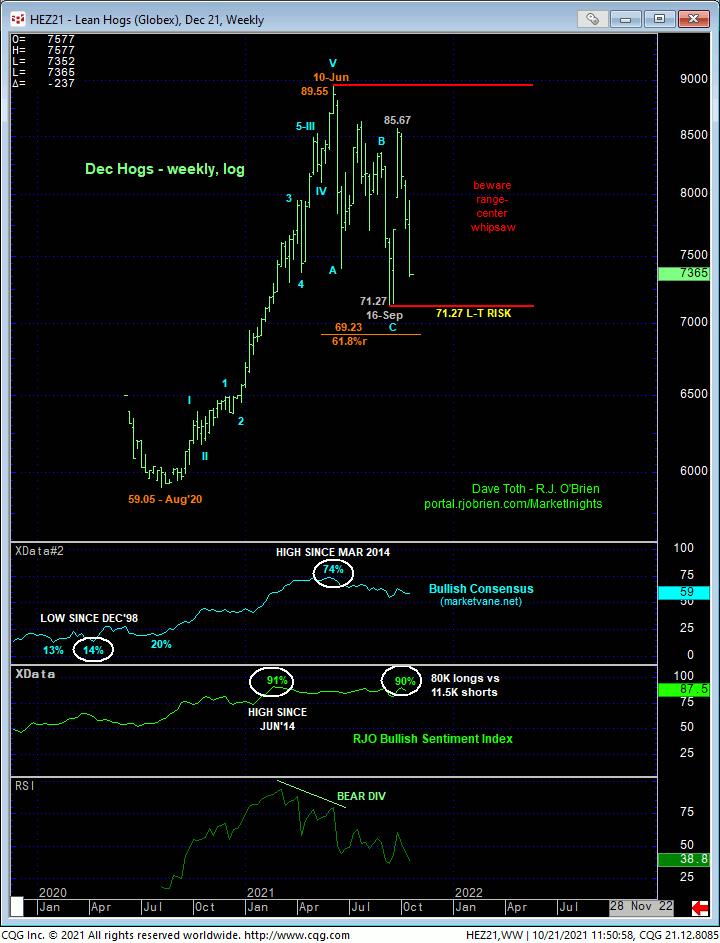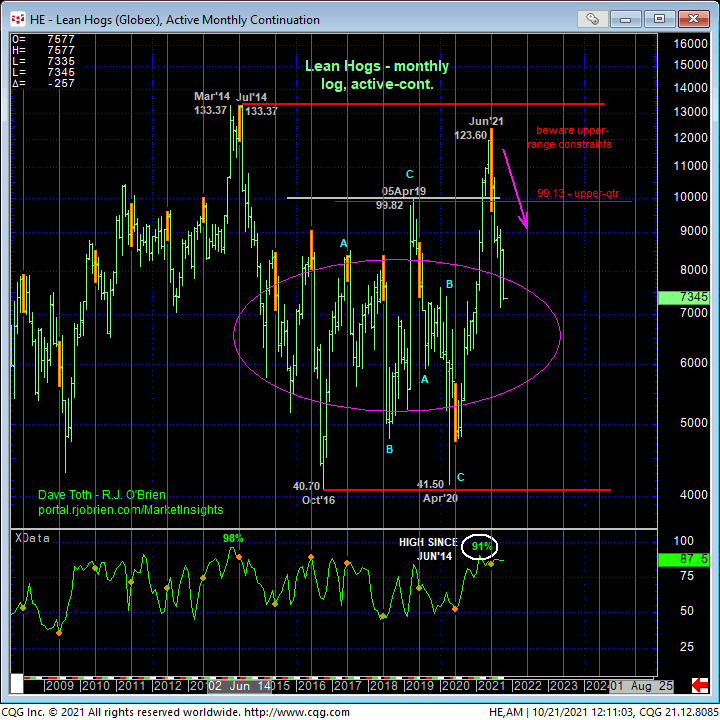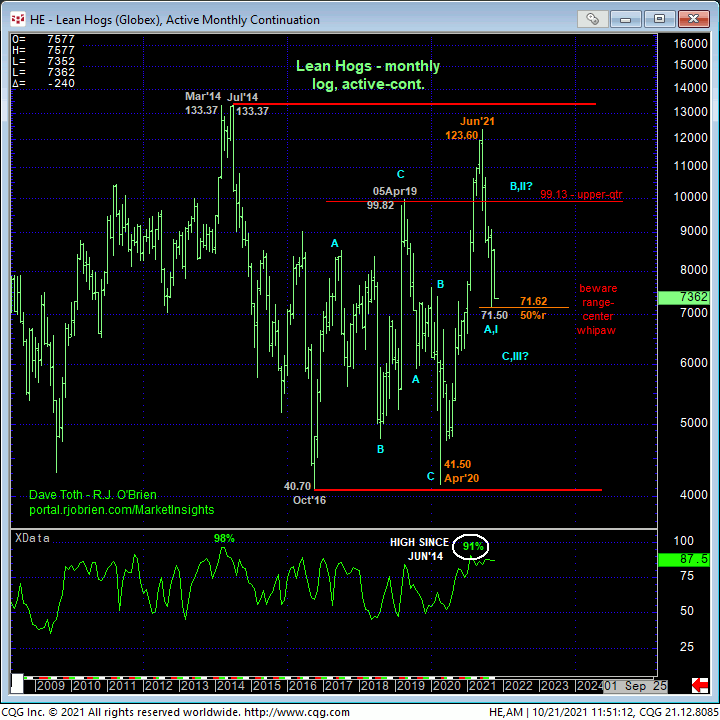Yesterday’s relapse below 14-Oct’s 77.25 low and our mini risk parameter resulting from Mon’s bullish divergence in very short-term momentum obviously nullified that divergence and re-exposed this month’s relapse. On a shorter-term hourly basis below, this resumed weakness leaves Mon’s 79.47 high in its wake as the latest smaller-degree corrective high this market is now minimally required to recoup to arrest this slide and revert the market to the four-month range between 16-Sep’s 71.27 low and 10-Jun’s 89.55 high. In this regard, this 79.47 level serves as our new short-term risk parameter from which a cautious bearish policy and exposure can be objectively rebased and managed. This risk parameter may come in handy given the market’s proximity to the lower recesses of the four-month range where another intra-range rebound is not hard to envision.


The daily chart above shows the resumed plunge stemming from the combination of 05-Oct’s bearish divergence in short-term momentum from the upper-quarter of the four-month range discussed in that day’s Technical Blog. Since 17-Jun’s very notable bearish divergence in WEEKLY momentum, we’ve opined that the combination of:
- that momentum failure
- complete 5-wave Elliott sequence from the 2020 low
- the market’s proximity to the extreme upper recesses of its historical range and
- historically frothy sentiment/contrary opinion levels
exposes a major peak/correction/reversal environment. Despite the admittedly erratic, volatile price action in late-Sep/early-Oct, this long-term view remains. The Bullish Consensus (marketvane.net) measure of contrary opinion has understandably eroded from a 7-year high of 74% in Jun to a relatively indifferent 59% currently. However, our RJO Bullish Sentiment Index of the hot Managed Money positions reportable to the CFTC has remained frothy, averaging 87% over the past 34 weeks. It’s 90% reading three weeks ago and latest reading of 87% reflecting 80K long positions to just 11.5K shorts remains a source of downside vulnerability, the capitulation of which could be behind this month’s plunge.


We would also remind traders that in every year over the past 13 years, with last year excepted, this market has had a seasonal tendency to trade lower in the months following Jun/Jul. Combined with the peak/reversal factors listed above, resumed downside pressure is not hard to swallow.
There’s no question that late-Sep’s spike to 85.67 disrupted/threatened a more immediate longer-term slide. In the months ahead, such volatility may prove more the norm than the exception now that the market has returned to deep within the middle-half bowels of its massive lateral range shown in the monthly log charts above and below. The monthly chart above shows the routine sell-off in the months following Jun/Jul. This chart also shows the aimless whipsaw insanity around the middle-half of this range over the past seven years circled in pink.
Given the peak/reversal elements listed above, counting the peak/reversal from the Jun high was a relative breeze following early-to-mid-Jun momentum failures. Navigating the market now, “down here” in the middle of its historical range, will become a greater challenge due to the increased odds of aimless whipsaw risk typical of such environs that we believe warrants a more conservative approach to risk assumption. Such a more cautious approach highlights the importance of identifying tighter but objective risk parameters exactly like 79.47.
These issues considered and since the market has yet to provide the evidence necessary to refute the past four months’ downtrend that could continue to depths unknown given still-exposed Managed Money longs, traders are advised to resume a bearish policy, only cautiously, with a recovery above 79.47 required to threaten this call enough to warrant its cover. “Chasing” lower prices in the black-hole-middle of a massive range presents poor risk/reward metrics and is ill-advised. Rather, and from the Dec contract’s close proximity to 16-Sep’s 71.27 low, we advise waiting for a smaller-degree corrective hiccup like that that we saw last week to identify a newer, tighter corrective high and risk parameter from which to rebase and manage the risk of a bearish punt. Mon’s 79.47 high works as such a risk parameter, but the risk/reward merits of that risk level so close to 16-Sep’s 71.27 low and support is poor, so better to stand aside until the market proves another shorter-term corrective pop. Some might beg the question, “Why not then take a punt from the buy side?” The answer, of course, is that ya don’t try to catch the falling knife until a bullish divergence in momentum defines a floor.

